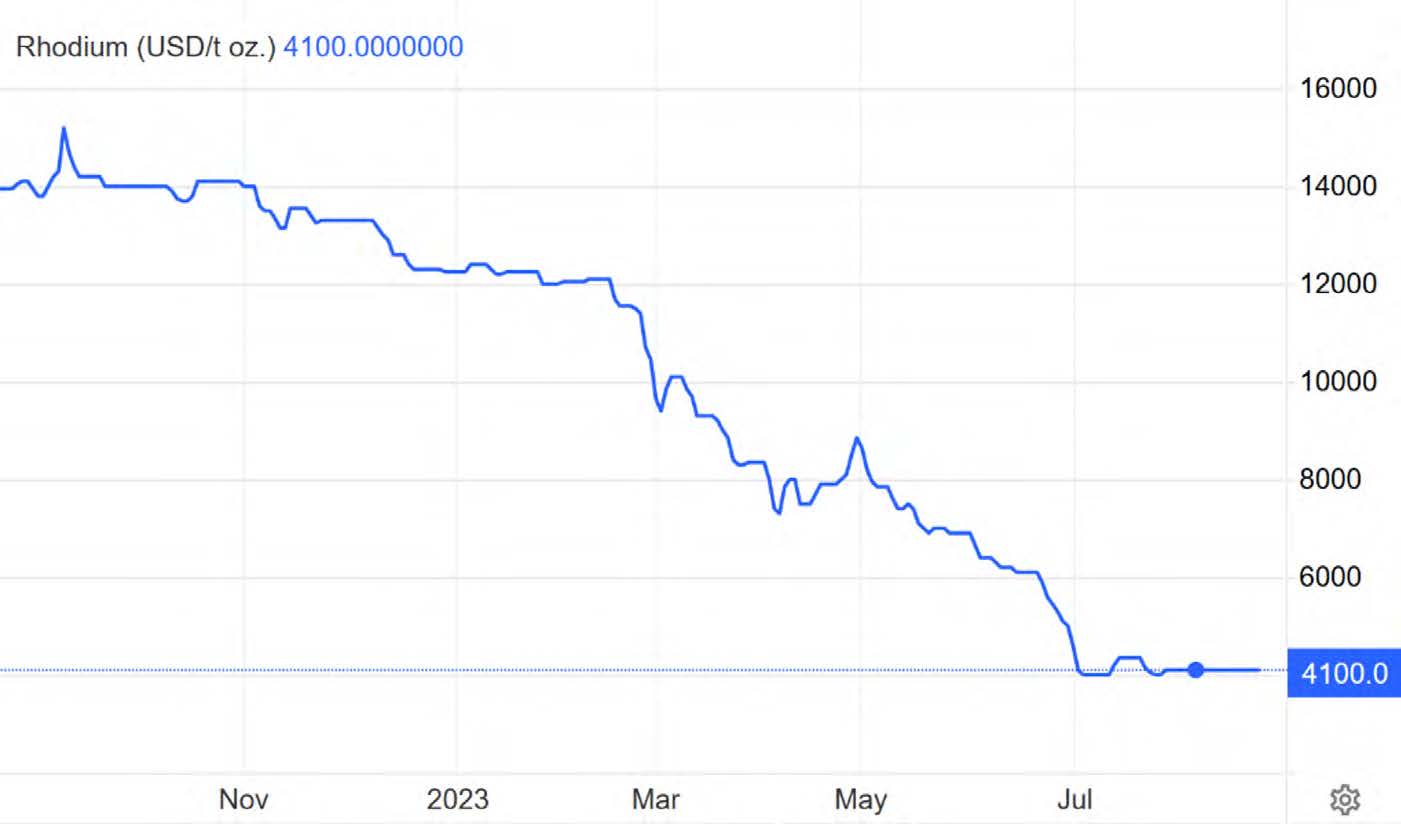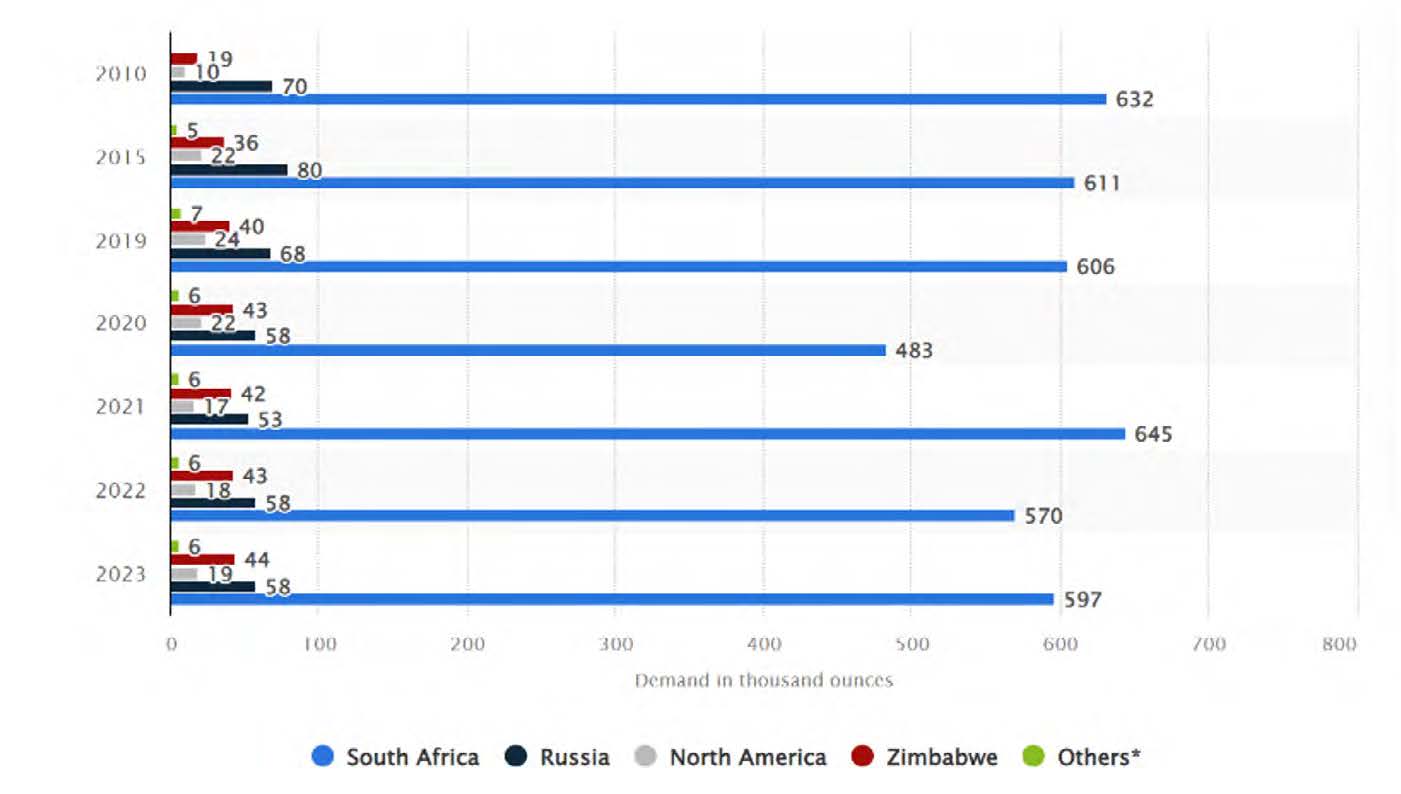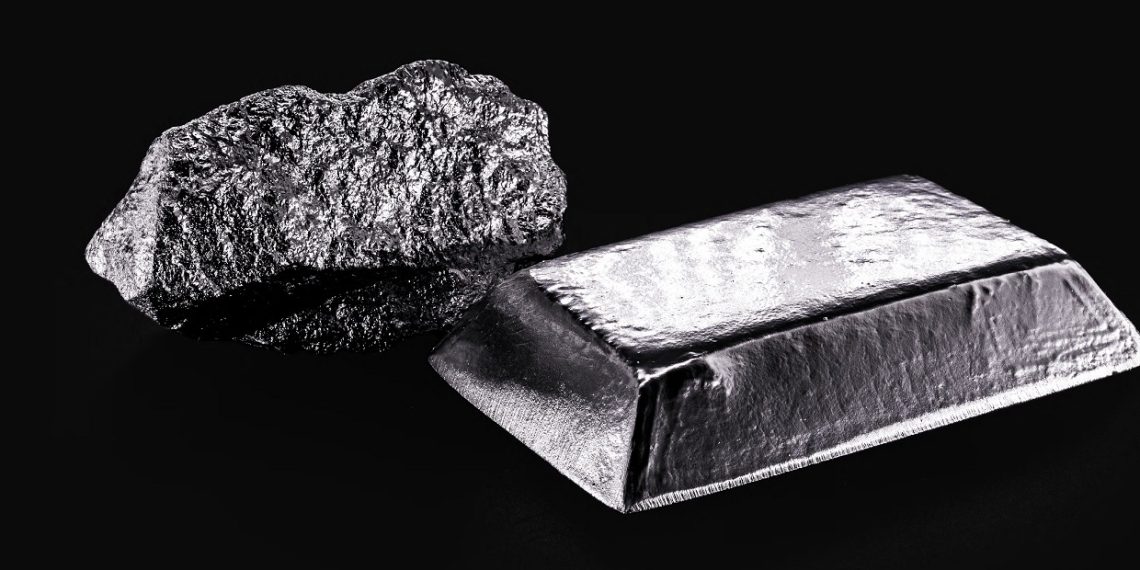Like other members of the platinum group metals (PGMs), rhodium is a rare precious metal, resistant to corrosion with a high melting point and excellent catalytic properties. It is considered one of the rarest precious metals on earth and is drastically more expensive than its valuable counterparts.
Pricing
Despite its daunting title as one of the world’s most costly precious metals, the price of rhodium decreased by US$8,150 per troy ounce, or 66.53%, since the beginning of 2023, according to trading on a contract for difference (CFD) that tracks the benchmark market for this commodity.
As at 21 August 2023, rhodium prices stabilized to around US$4,110.6 per troy ounce, so despite the significant reduction in pricing over the last eight months, the PGM still managed to retain its title.
The high price of rhodium is partly attributed to its scarcity, with only about 30 metric tonnes produced per year compared to roughly 210 metric tons of palladium, 190 metric tonnes of platinum, or 3,100 metric tonnes of gold produced in 2022.
 Usage
Usage
Rhodium is highly desirable in the industrial sector due to its unique properties, particularly it’s durability and resistance to heat, wear, and corrosion. It is used in an array of industries from automotive, medical, chemical, and electronics. Rhodium is the most effective metal to catalyse the conversion of harmful NOx (mixed oxides of nitrogen) from vehicle exhausts into harmless gases safe for release into the atmosphere. Its use in three-way catalysts for gasoline vehicles continues to increase with ongoing tightening of recent emissions legislation, particularly in China and Europe. Rhodium, along with palladium and platinum, are therefore vital catalysts used in catalytic converters due to their stability and high catalytic activity.
 Also used in the production of electronic components, rhodium is customarily used in circuits and connectors. With the increasing demand for electronic and digital devices comes the parallel call for rhodium in this sector, as demand is expected to rise further. Other applications vary and include nuclear reactors, mirrors, and jewellery.
Also used in the production of electronic components, rhodium is customarily used in circuits and connectors. With the increasing demand for electronic and digital devices comes the parallel call for rhodium in this sector, as demand is expected to rise further. Other applications vary and include nuclear reactors, mirrors, and jewellery.
Mineral geography
The largest rhodium deposits are scattered across the globe, most commonly found in South Africa, Russia, and North America. South Africa is the dominant producer, accounting for nearly 80% of global rhodium output. Russia and Canada account for the remaining 20% of global rhodium production, depicted in the graph shown.
However, geopolitical factors weigh heavily on the mining and sale of rhodium, with the potential to carry a significant impact. For instance, the mining and production of rhodium in South Africa has in the past been affected by political instability, strikes, and labour unrest. As a result, the supply of rhodium from South Africa can be unpredictable, therefore causing fluctuations in global rhodium prices. This is also prevalent for supplies from Russia, with the Ukraine-Russia war posing significant obstacles worldwide and especially within the rhodium mining and export industry.
Extraction and mining
The scarcity of rhodium also makes it challenging to drill and mine. Rhodium is often found as a by-product of other metals such as platinum or nickel, which makes its mining process more complex and pricey. Likewise, the high cost of rhodium means that it is often recycled and reused rather than mined anew.
According to Umicore (EBR: UMI), the PGM metal is recycled mainly from spent automotive catalysts, rarely returning to the cycle from other applications. It is either found in so-called “closed loops” (hence also recycled, often in the glass industry) or used in such small quantities in various applications that recycling is technically and economically not feasible.
Roughly one-third of all the rhodium produced each year comes from recovery and recycling. Therefore, recycling plays a significant role in rhodium’s global market supply. Due to the distinct properties of the precious metal, only a few companies worldwide can recycle rhodium – including Umicore.
Rhodium demand
In 2023, the global demand for rhodium in chemical uses is expected to reach 82,000oz, up from 66,000oz the previous year. Rhodium is expected to trade at US$3,990.94 per troy ounce by the end of this quarter (August 2023), according to Trading Economics global macro models and analysts’ expectations. Looking forward, the company estimates it to trade at US$3,680.98 within one years’ time.
Rhodium market outlook
The global rhodium market was valued at US$2,118.1M in 2022 and is anticipated to reach US$2,926M by 2029, witnessing a CAGR of 4.6% during the forecast period 2023-2029.
The metal has gradually gained momentum in the global market over the last decade. Hence, the market outlook for rhodium remains bullish, as the demand-supply dynamics continue to favour it.
The supply side appears to continue as is, with projections remaining tight, particularly in South Africa. The country’s primary rhodium-producing mines have faced several operational challenges in recent years, including electricity disruptions and COVID-19 related closures, which have limited production levels.
Both rhodium demand and supply indicate that there could be a further price surge in the coming months. The demand for electric vehicles (which do not generate emissions, therefore making it null and void in their use) could potentially impede the market. However, traditional combustion engines are still prevalent in most countries, and the demand for rhodium as a catalyst to reduce emissions currently shows no signs of deceleration.
Largely, rhodium is a scarce and valuable element that plays a crucial role in a variety of industries and products. Its high price reflects its rarity and high demand, particularly in the automotive and electronics sectors. Despite its limited production, rhodium’s unique properties make it essential in many industrial processes notwithstanding its easy sway in the wake of geopolitical events. Rhodium is a valuable metal, no matter its volatility, and its value is expected to continue to rise in the coming years.












